Unraveling Human Biology: A Journey from the Organism to the Atom
Laying the Groundwork for Digital Biology
Setting the Foundation for Computational Genomics and Beyond
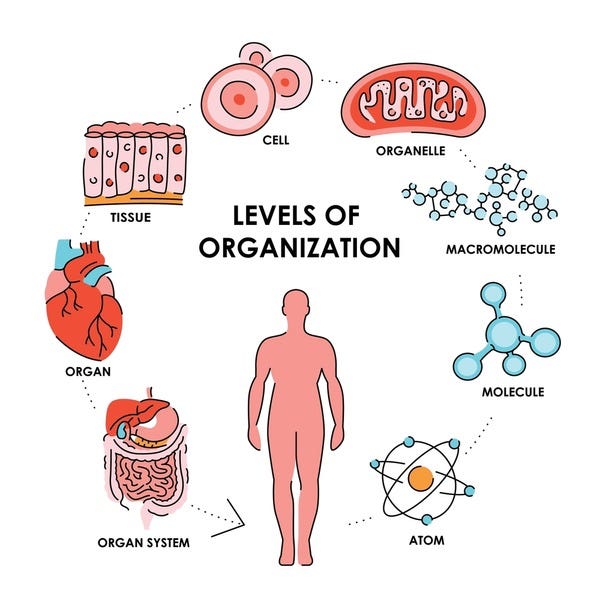
The hierarchical organization of biological systems from organism to atom
The human body is an intricate marvel, a complex web of systems, cells, and molecules all working together to sustain life. From the macroscopic level of our bodily systems to the microscopic intricacies of molecules and atoms, biology showcases a remarkable hierarchy of organization.
🌟 Introduction
The human body is an intricate marvel, a complex web of systems, cells, and molecules all working together to sustain life. From the macroscopic level of our bodily systems to the microscopic intricacies of molecules and atoms, biology showcases a remarkable hierarchy of organization. At the core of this complexity lies genomic information—the blueprint of life—which computational genomics seeks to decode and understand.
This article explores human biology across multiple levels of resolution, from the entire organism to the atomic level. It sets the foundation for future discussions on genomic data, computational methods, and cutting-edge developments in computational genomics. Understanding these biological levels will provide the perspective necessary to appreciate the power and potential of computational tools in unlocking the secrets of our biology.
🧑🤝🧑 1. The Individual Level: The Human as an Organism
At its most holistic, the human body functions as a single, self-sustaining organism. This integration is achieved through the coordination of organ systems that maintain homeostasis and enable survival. The circulatory system transports oxygen and nutrients, the nervous system processes and responds to stimuli, and the immune system defends against pathogens. All these systems work together to form a highly efficient and adaptable biological machine.
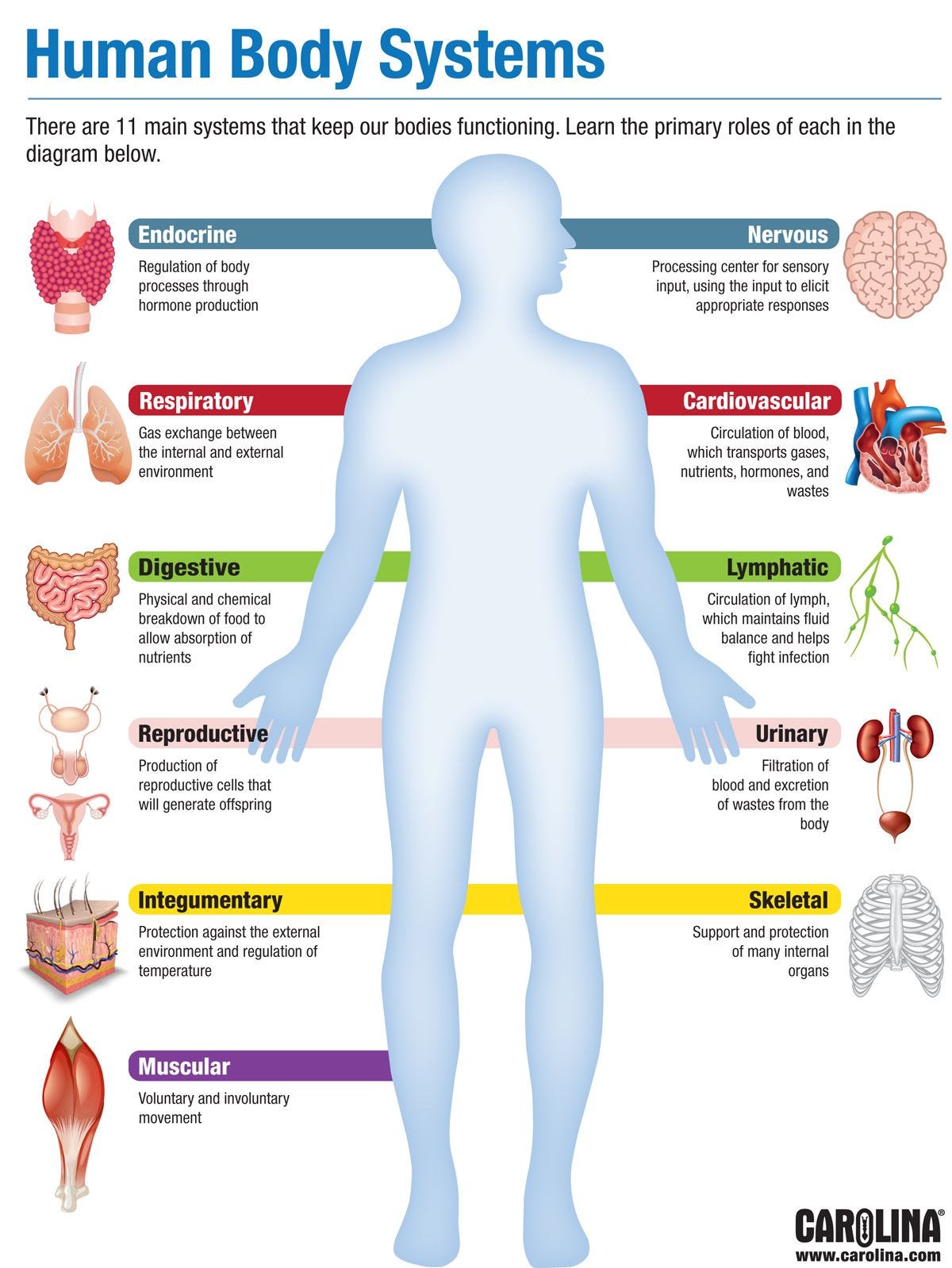
Human body systems working in coordination. Source: carolina.com
At this level, we study genome-wide patterns that affect entire organisms, such as population genetics, evolutionary genomics, and systems-level disease phenotypes.
🫀 2. The System Level: Organs Working in Harmony
Each organ system is a group of organs that collaborate to perform specific functions. For instance, the digestive system processes food into energy and nutrients, while the respiratory system facilitates oxygen exchange. The complexity of these systems lies in their specialization and interdependence.
In genomics, system-specific studies, such as transcriptomics of the brain or liver, provide insight into how genes are expressed differently in various systems. Projects like the Human Cell Atlas are shedding light on the gene expression profiles of individual systems, revolutionizing our understanding of organ function.
🫁 3. The Organ Level: Specialized Structures
Organs are specialized structures uniquely adapted to their roles. The heart, for example, pumps blood through its muscular chambers, while the lungs maximize gas exchange through their alveoli. Each organ’s structure is a testament to its function.
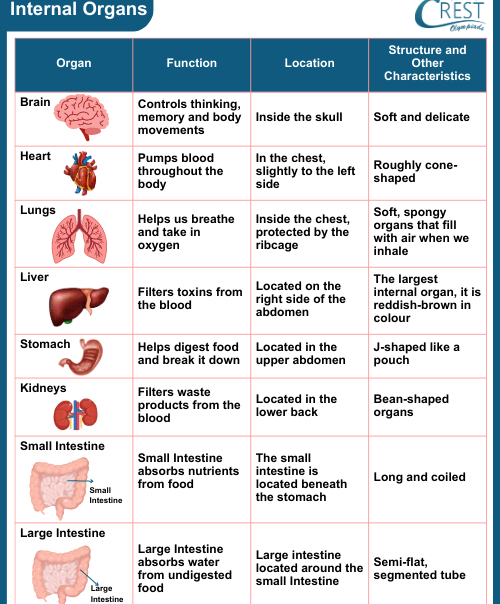
Specialized organ structures adapted to their functions. Source: crestolympiads.com
At the organ level, genomics and epigenomics reveal how specific genes and regulatory elements drive these specialized roles. For example, the liver’s detoxification capabilities rely on enzymes coded by the CYP450 family of genes. Studying these mechanisms helps us understand organ-specific diseases and their underlying genetic causes.
Organ-specific genomic studies are crucial for understanding diseases like cancer, where the tissue of origin plays a vital role in treatment selection and prognosis.
🧬 4. The Tissue Level: Building Blocks of Organs
Tissues, the building blocks of organs, are groups of similar cells performing shared functions. The four primary tissue types are:
- Epithelial tissue - covers surfaces and forms barriers
- Connective tissue - provides structural support
- Muscle tissue - enables movement
- Nervous tissue - transmits signals
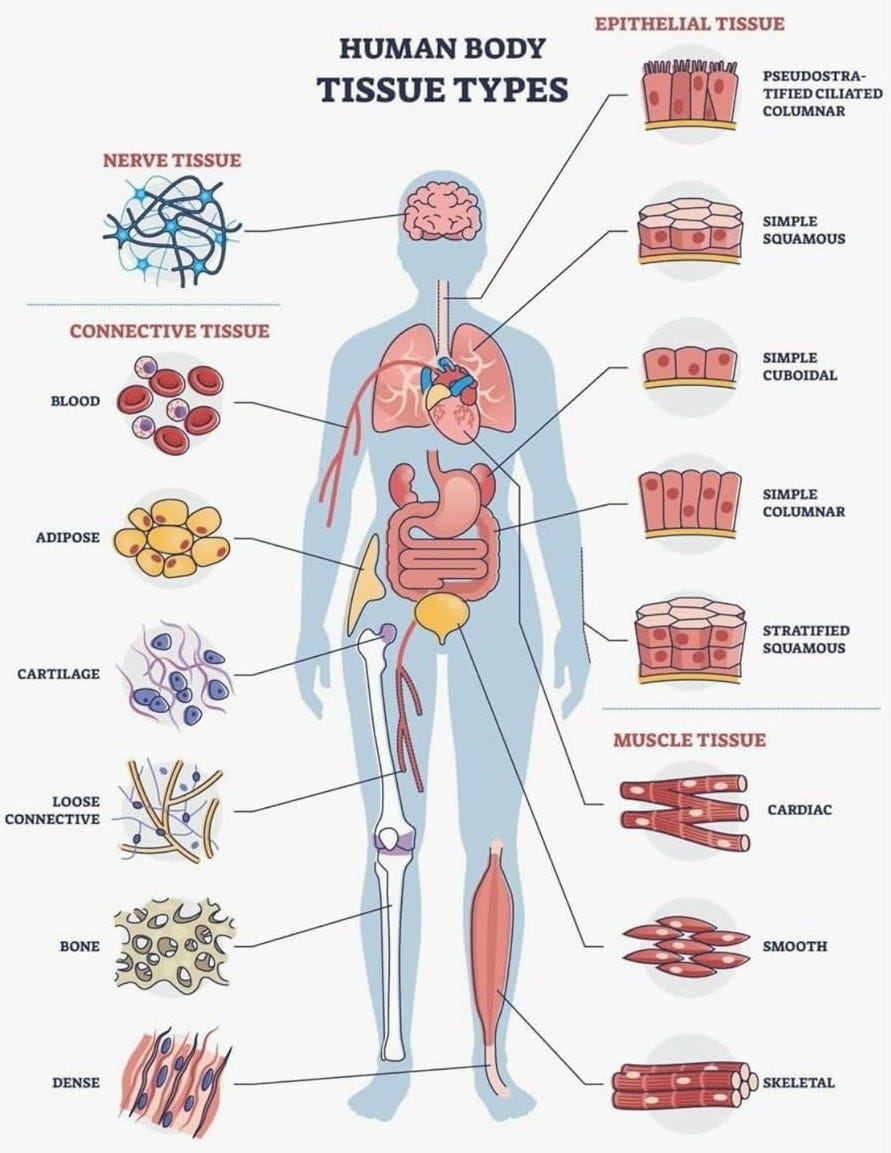
The four primary tissue types and their organization
Tissue-specific genomic and transcriptomic studies are pivotal in understanding diseases like cancer, where the tissue of origin plays a crucial role. Spatial transcriptomics is a powerful tool for studying tissue heterogeneity, providing insights into how different cells within a tissue function together.
🔬 5. The Cellular Level: The Foundation of Life
Cells are the smallest units of life and the foundation of all biological processes. The human body contains over 200 types of cells, each specialized for its function. For example:
- Red blood cells transport oxygen
- Neurons transmit electrical signals
- Muscle cells generate force and movement
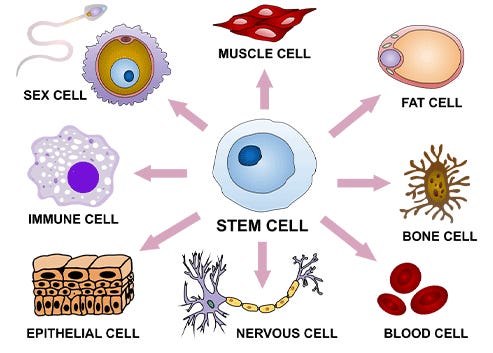
Various specialized cell types in the human body
Within each cell, organelles like the nucleus (storing DNA) and mitochondria (producing energy) drive essential functions. Single-cell RNA sequencing (scRNA-seq) has revolutionized our understanding of cellular diversity, enabling researchers to classify cell types and study their roles in health and disease.
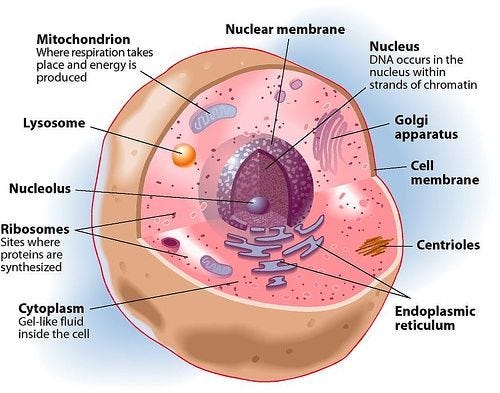
Cellular organelles and their specialized functions
Single-cell technologies have opened unprecedented insights into cellular heterogeneity, revealing previously unknown cell subtypes and states.
⚛️ 6. The Molecular Level: Life’s Biological Machinery
At the molecular level, life is powered by biomolecules:
- DNA and RNA store and transmit genetic information
- Proteins carry out enzymatic, structural, and signaling functions
- Lipids and carbohydrates provide energy and structural support
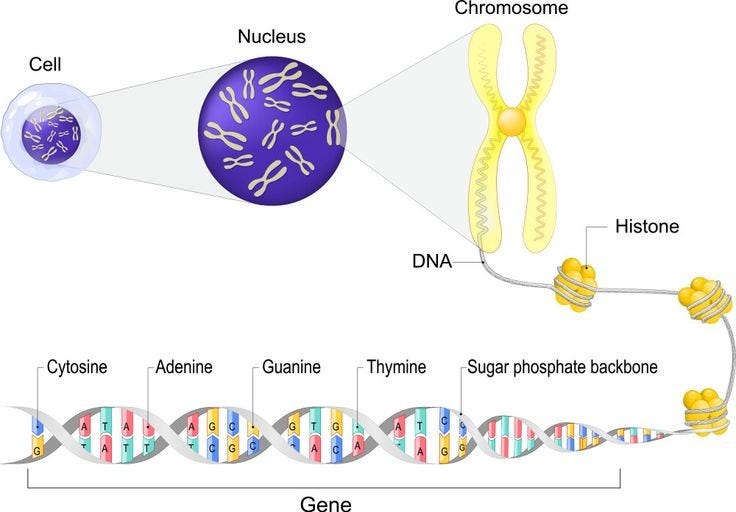
Cell nucleus with chromosomes containing DNA

The four major biomolecules: carbohydrates, lipids, proteins, and nucleic acids
The central dogma of molecular biology (DNA → RNA → Protein) underpins cellular function. Computational genomics tools, such as AlphaFold for protein structure prediction and RNA-seq for transcriptomics, are transforming how we study molecular interactions and their biological implications.
🪐 7. The Atomic Level: The Basis of Everything
At the atomic level, life’s complexity arises from simple elements like carbon, hydrogen, oxygen, and nitrogen. These atoms bond to form the molecules that sustain life. For example:
- Water (H₂O) enables biochemical reactions
- Carbon-based molecules form the backbone of DNA, proteins, and lipids
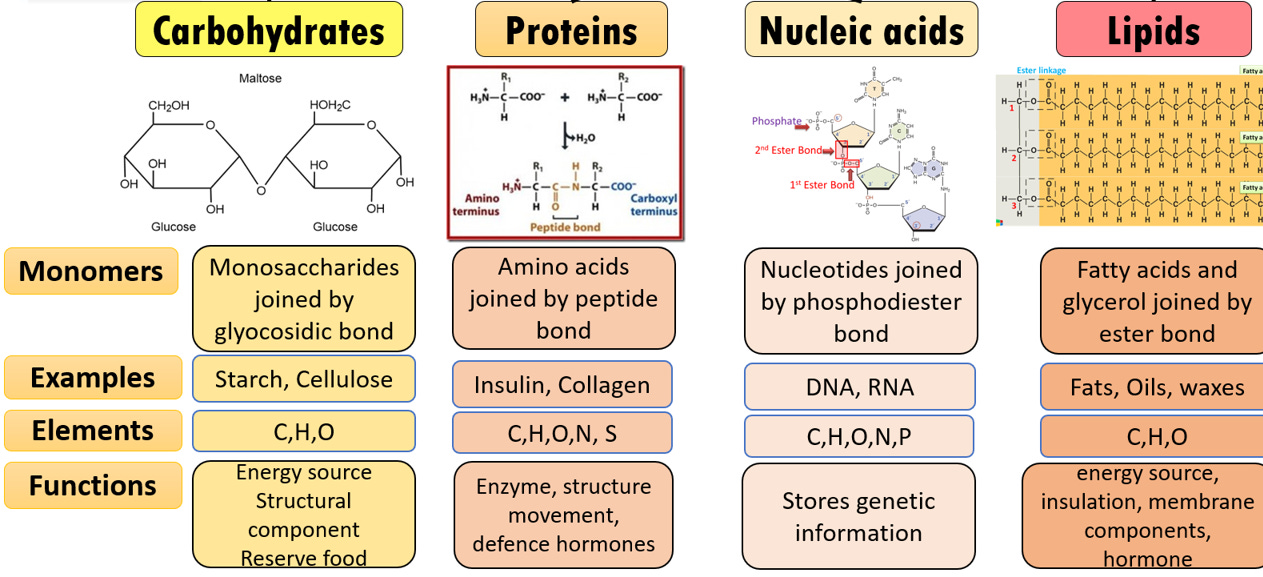
Comparison of the four major biomolecule structures: carbohydrates vs proteins vs nucleic acids vs lipids
Atomic-level studies, such as molecular dynamics simulations, allow researchers to predict how genetic mutations alter protein structure and function, a key area in precision medicine.
🔗 8. Integration: Connecting the Levels
Biology is inherently hierarchical. Changes at one level can cascade across others. For example, a single mutation in DNA (molecular level) can alter protein function (cellular level), disrupt organ function (organ level), and manifest as a disease (organism level).
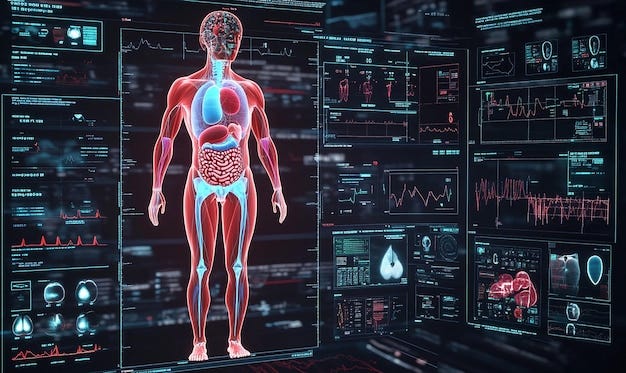
Digital representation of multi-scale biological modeling
In computational genomics, multi-scale modeling bridges these levels, helping predict how molecular changes translate into phenotypic outcomes. This integration is vital for understanding complex traits and diseases.
Understanding these interconnections is crucial for systems biology approaches that aim to predict emergent properties from molecular interactions.
🤖 9. Setting the Stage for Computational Genomics
This exploration of biological levels lays the groundwork for understanding the role of genomics and other omics (e.g., transcriptomics, proteomics, epigenomics) in decoding life. Computational genomics leverages tools like machine learning (ML) and artificial intelligence (AI) to analyze vast datasets, enabling:
- Genome-wide association studies (GWAS) to link genes with traits
- Identification of regulatory elements through epigenomic data
- Prediction of protein structure and interactions
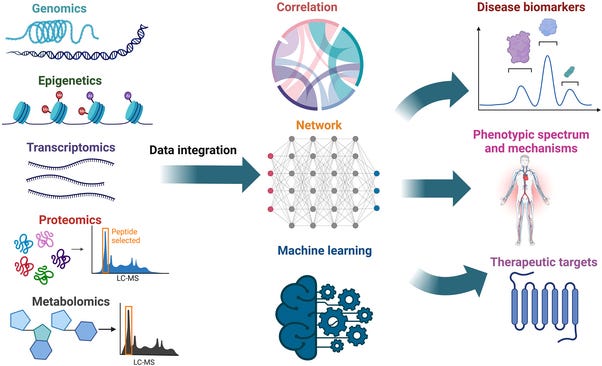
Computational approaches to genomics research
Future articles will delve into each omics field, discussing computational challenges, emerging methods, and their applications in fields like precision medicine and evolutionary biology.
🎯 Conclusion
From the macroscopic human body to the microscopic world of molecules and atoms, biology reveals an intricate tapestry of organization and function. Genomics sits at the core of this hierarchy, offering a lens through which we can understand life’s complexity.
This post sets the stage for deeper exploration of computational genomics, a field that blends biology and technology to unlock the secrets of our DNA. Stay tuned as we dive into how genomic data, AI, and advanced computational methods are transforming our understanding of biology and paving the way for the future of medicine.
🔮 Coming Next
In the next article, I will discuss various genomic data acquisition methods at each level of the organization.
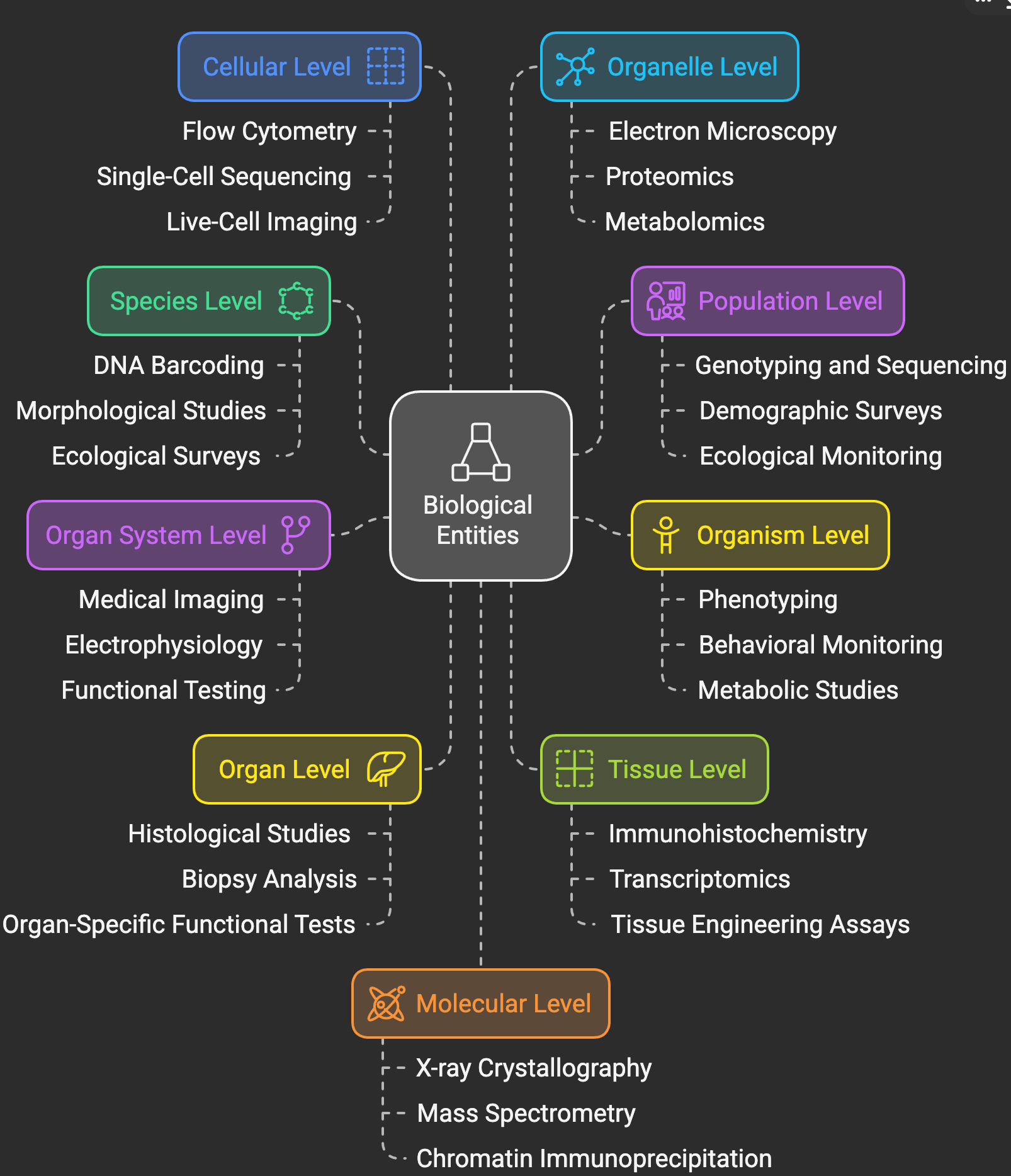
Complete overview of biological organization levels and their interconnections
This post is part of an ongoing series on AI for Precision Medicine, exploring how computational approaches are revolutionizing genomics, drug discovery, and personalized healthcare.
Originally published on AI for Precision Medicine Substack - January 9, 2025